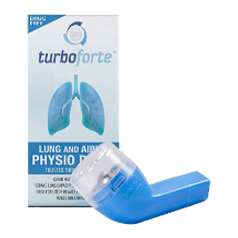
Asthma is a long-term lung condition that affects the airways. People with asthma often encounter difficulties breathing. This is because their airways are extremely sensitive and when inflamed, become narrow and contract. These flare-ups can occur slowly over hours, weeks, or immediately within a few minutes.
Asthma attacks can be triggered by numerous causes. Allergens such as dust and pollen, and non-allergens like aerosols, perfume products, and smoke are common triggers for flare-ups. Exercise-induced Asthma is usually caused by physical activities that may put a strain on breathing.
What are some symptoms of Asthma?
- A persistent cough
- Wheezing, shortness of breath
- Tight chest and/or chest pains
- Breathing difficulties (silent asthma where one may not wheeze or cough)
How do you get Asthma?
The exact causes of asthma are still unknown and both genetic and environmental factors are under consistent scientific study. However, people who have asthma often have a family history of asthma, eczema, hayfever, or other allergies. It is non-communicable, meaning it is a chronic condition and non-infectious.
Additionally, research demonstrates environmental factors such as workplace chemicals and regular exposure to fumes or smoke, may have a contribution to developing asthma. Chronic Asthma is a form of Chronic Obstructive Pulmonary Disease (COPD).
According to the World Health Organization, asthma affected an estimated 262 million people in 2019 and was a leading cause of roughly 461, 000 deaths.
How do you treat it?
While there is no cure as of current, it can be managed effectively across the lifetime. Avoiding exposure to environmental triggers like dust, smoke and fumes are fundamental to limiting the opportunity for flare-ups.
Medications to reduce the inflammation or swelling of the airways are also available. Preventative measures such as inhaling devices that apply Oscillating Positive Expiratory Pressure (OPEP) help to strengthen lung capacity and relax airways.
How can an OPEP device help those living with Asthma?
The Turboforte Lung Physio is a handheld, drug-free lung relief device that helps to expand lung capacity and strengthen airways. The respiratory flutter valve device operates through a precisely weighted stainless steel ball that creates vibrations through your airways when you exhale through the device. These vibrations are carried through your respiratory system, opening up your lungs and clearing mucus from your airways for optimized breathing. Alleviate symptoms and prevent the frequency and severity of flare-ups in just 5-10 minutes, 1 to 2 times per day of therapy with the Turboforte Lung Physio.
Turboforte Lung Physio helps expand and strengthen the lungs of those suffering from Asthma, which means they can breathe easier and enjoy a better quality of life, all without the side effects of drugs.
Can it be trusted?
Registered and approved by the U.S. Food and Drug Administration (FDA), the Australian Governments Therapeutic Goods Association (TGA), and the European Union’s (EU) standards for health and safety, the Turboforte Lung Physio is medically and globally trusted.
Turboforte Lung Physio has been a trusted therapy since 2009. It has been recommended by healthcare professionals and used in hospitals worldwide. It is proudly Australian Owned and is manufactured using strict quality control with medical grade materials.
Turboforte is easy to use, non-invasive, and medically approved. Read about how Turboforte has helped thousands in our customer testimonials here or purchase one for yourself today.
While Turboforte is a drug-free, all-natural way to help and can be used in conjunction with your usual treatment regime, always seek the guidance of your doctor or other qualified health professional with any questions you may have regarding your health or a medical condition. Never disregard the advice of a medical professional, or delay in seeking it because of something you have read that contradicts your doctor’s personal advice.




